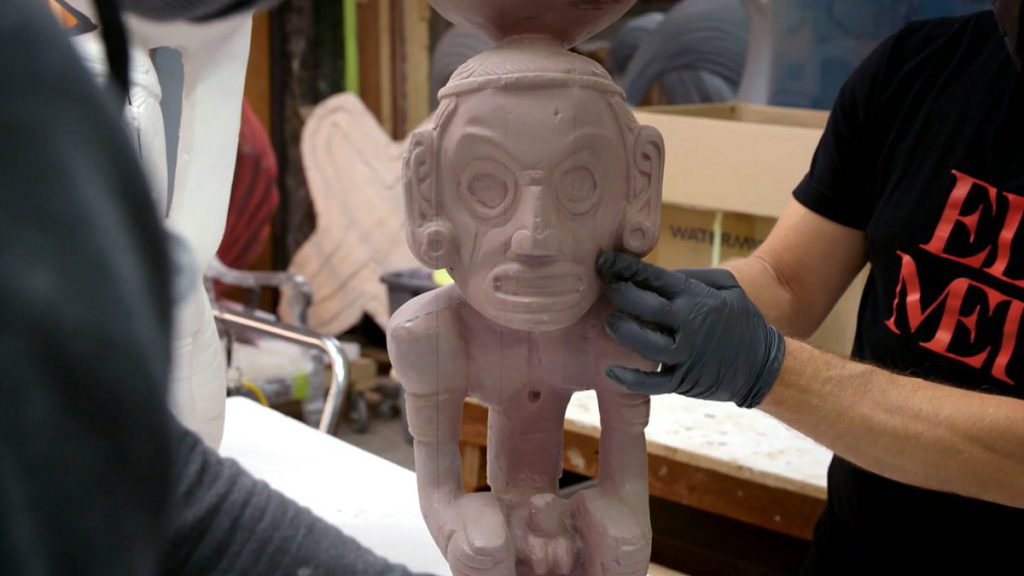Inside America’s Treasure House: The Met episode 2: The outcry following the murder of George Floyd in May 2020 has the Met, during lockdown, examining its record on inclusion and diversity, and realising it must change.
The Met’s 150th anniversary year has been derailed by Covid-19. Then in May 2020, the murder of George Floyd, only the latest in a litany of killings of African Americans by white police officers, forces America to confront, once again, inequalities in social justice.
At the museum, the executive are examining their historical record on inclusion, exclusion and diversity, in art and staffing, and find it wanting. In an open letter, questions have been raised and accusations levelled about systemic racism at all New York arts institutions. CEO Dan Weiss has been wrong-footed by anger from within the museum about a postcolonial state of mind expressed in some of the Met’s most treasured objects.
In the American Wing, Weiss ponders a 21st-century question: some of the art reflects 19th-century tastes and attitudes to other cultures, in particular the First Nations, who were moved off their homelands even as the museum was being built. It’s not just indigenous peoples; most citizens of New York are not Caucasian – where are their stories? How do black and brown visitors feel about their representation in an art house that says it wants to be all things to all people?
The programme moves on with a chronicle of a visit to the Met by Connecticut resident and mum of two Tracy-Ann Samuel. The African American community worker grew up in the city. For her and husband Cleon the Met was more than a museum; it was a portal to other cultures, ideas and, of course, beauty. She wants her girls, Kristen, ten, and Kelsie, four, to see positive depictions of people who look like them, and to ask questions about art that makes statements and assumptions about gender, power and race.
Inside America’s Treasure House: The Met episode 2
The theme of art and politics as indivisible begins. The Samuel family analyses the messaging in one of the Met’s keystone treasures, Emanuel Leutze’s Washington Crossing the Delaware. It’s a celebrated depiction of heroism, idealising a pivotal moment in the struggle to create the republic, which forms part of the national narrative displayed in the American Wing. Kristen Samuel is a dispassionate viewer, but finds little to interest her.
In contrast, Wooden Boat People, two works by Cree artist Kent Monkman, speak directly to the family. Provocatively positioned in the Great Hall, the paintings were commissioned by the Met, who invited Monkman to look for inspiration in the collections. Leutze’s Washington portrait was his choice. The works feature Monkman’s gender-fluid alter ego, Miss Chief Testickle.
We see the Canadian artist in his rural studio near Toronto to hear of his relationship with the Met, colonial attitudes and the activities of the slave-owning, native-baiting Washington.
At the museum, there’s more political comment, long hidden but now revealed by x-ray analysis of Jacques-Louis David’s portrait of scientists Mr and Mrs Lavoisier. Painted just before the French Revolution, it had depicted the bourgeois couple as clever but chic, but was hurriedly overpainted to save them from the guillotine.
But should stories of the old, white and dead take precedence in the museum? And should it concern itself with anything more than the beauty of the exhibits? These issues are discussed by Head of Modern and Contemporary Art Sheena Wagstaff, who proactively promotes the work of African American and other unrepresented artists. She’s just added Rashid Johnson’s Five Broken Men to the collection.
The issue, says Mary Rockefeller, whose family have long been Met donors, is respect. Her father Nelson was so obsessed with what was once called ‘Primitive Art’ that he gave the Met his personal collection and then built a vast wing to house it. Named for Mary’s twin David, who disappeared in Papua New Guinea, the collection of arts of Africa, Oceania and the Americas is the setting for the existential question facing all museums: shouldn’t the exhibits be given back?
Puerto Rican artist Miguel Luciano has taken the discussion a step forward by 3D modelling a 1,000-year-old wooden devotional statue from the Rockefeller collection. He’s not for taking it back, but for re-contextualising an object designed to be handled. We are with him as he unveils it to veteran social photographer Hiram Maristany. Luciano is working on a Met programme that aims to use artefacts to build links with communities who might feel that the museum, and its collections, have little to say to them.
At the end of their visit, the Samuel family find that the season’s stand-out exhibition, The American Struggle, speaks volumes to them. Thirty panels by Jacob Lawrence, leading African American painter of the postwar period, celebrate the contribution of black citizens to the birth of the nation. Tracy-Ann sees the Met has a long way to go, but the journey to greater diversity, fairer representation and visibility has begun.




